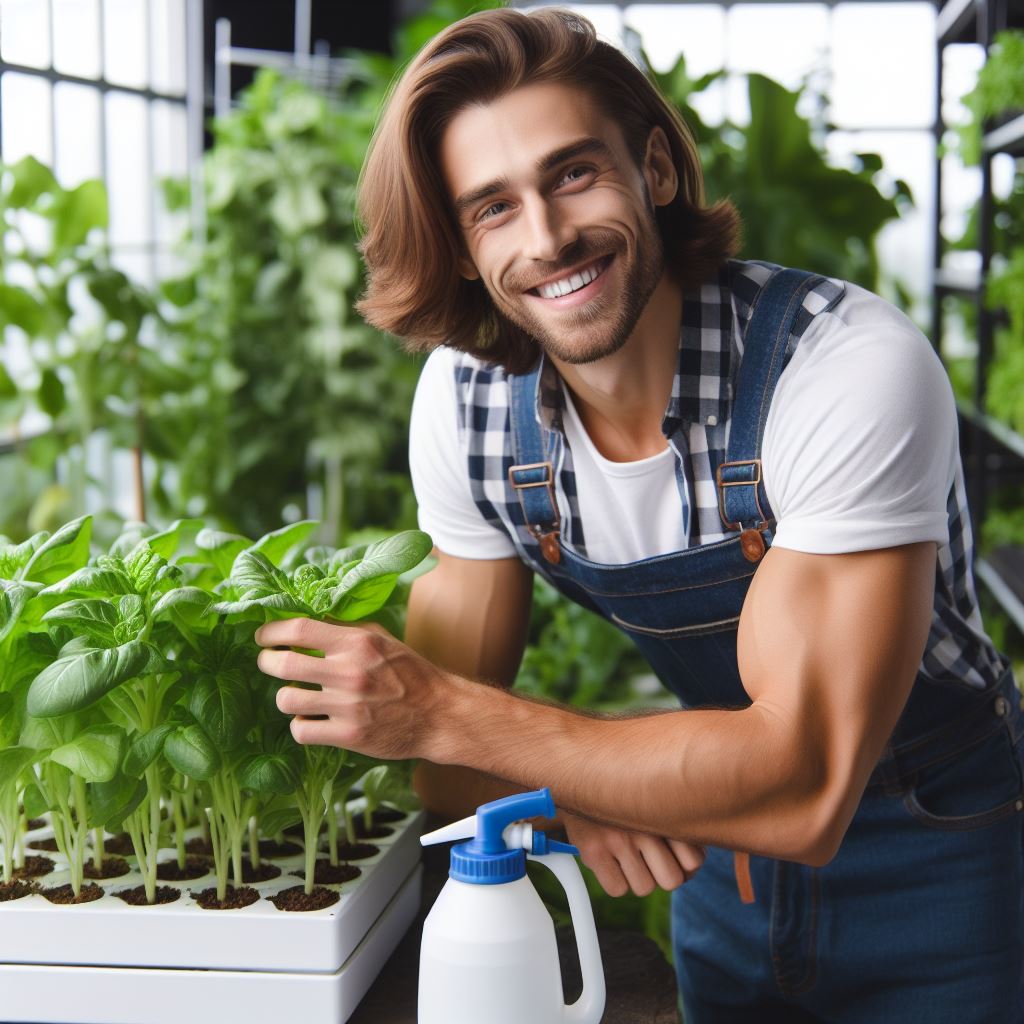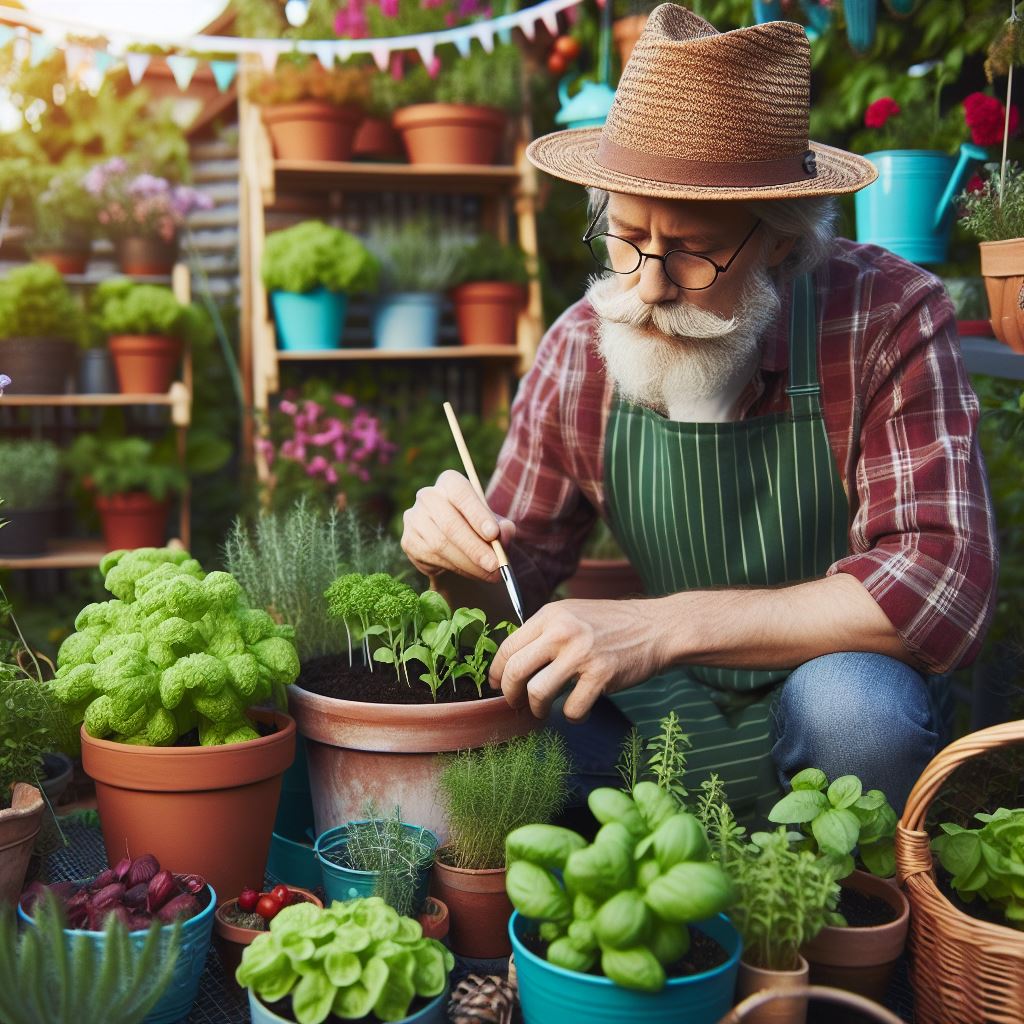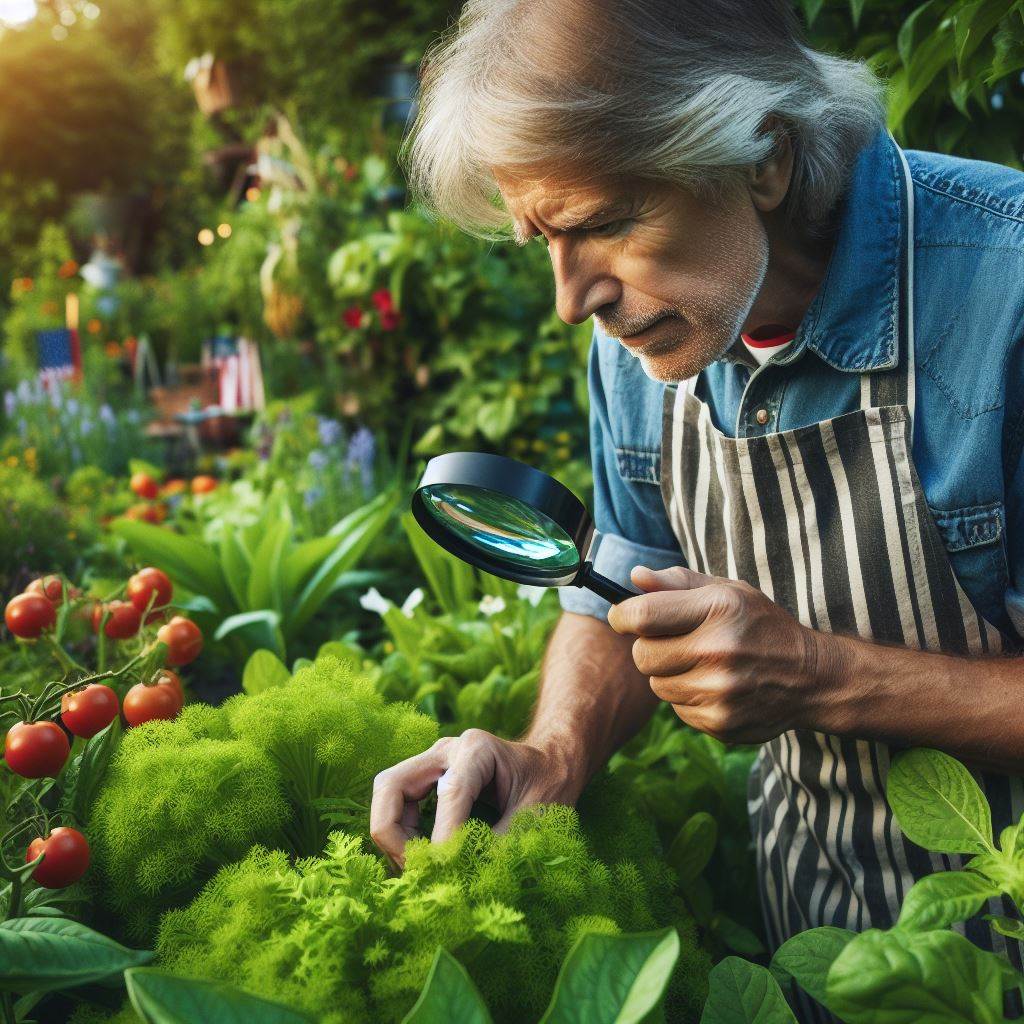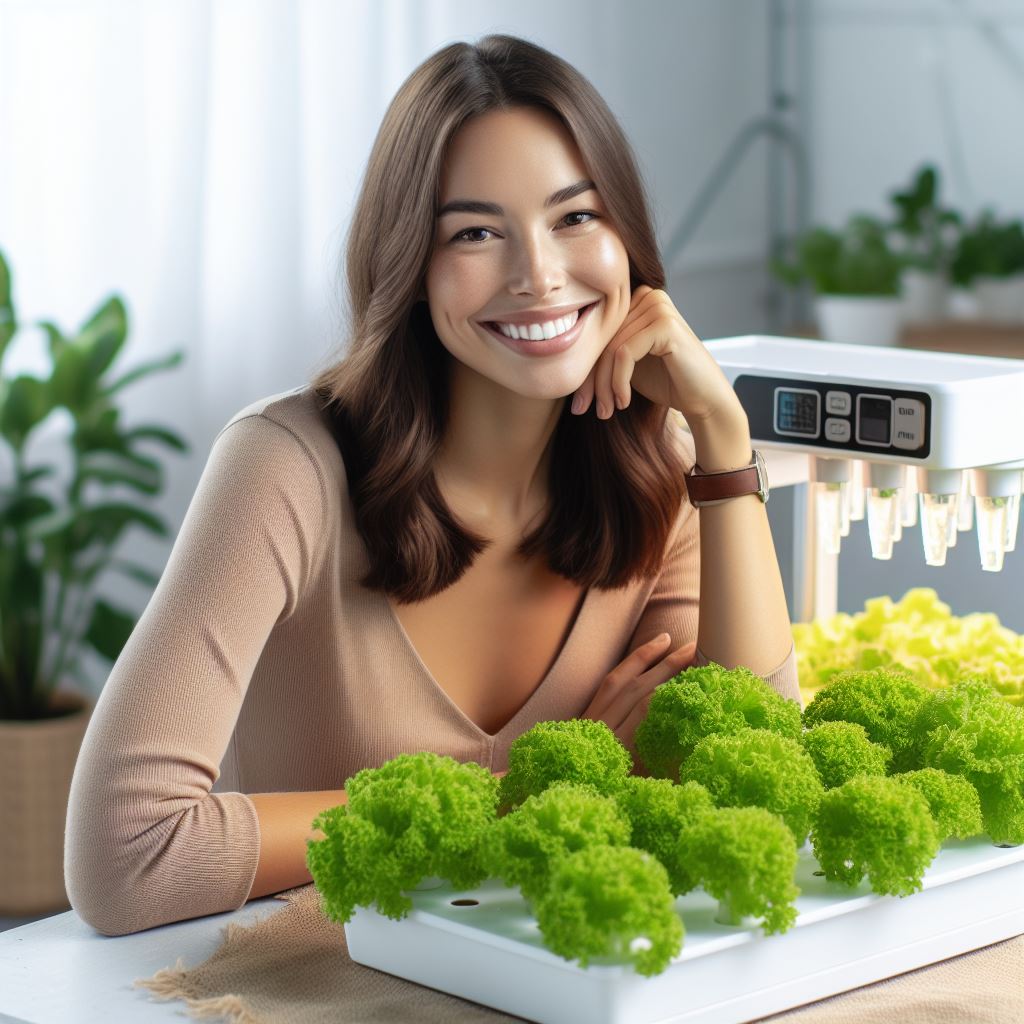Introduction
Hydroponics has gained popularity as an alternative method of growing plants without soil.
Instead, it utilizes a nutrient-rich water solution to provide essential elements for plant growth.
The idea behind this technique is to create an optimum environment for plants to thrive and produce high-quality yields.
One of the greatest advantages of hydroponics is its versatility and flexibility.
It allows plants to be grown in various settings, such as indoor spaces, limited urban areas, or even balconies.
However, setting up a hydroponic system can often be costly, discouraging many potential growers from pursuing this method.
Therefore, the importance of low-cost setup ideas cannot be underestimated.
These ideas aim to provide affordable alternatives for individuals who are interested in trying hydroponics but may have limited resources or budget constraints.
By utilizing inexpensive materials and creative solutions, growers can build their own hydroponic setups without breaking the bank.
Low-cost setup ideas can include using plastic containers or recycled materials as growing containers, implementing DIY lighting systems using LED or fluorescent lights, and using homemade nutrient solutions or organic alternatives.
Additionally, vertical gardening techniques and repurposing household items can also contribute to reducing costs.
By promoting low-cost setup ideas, hydroponics becomes more accessible to a wider audience, including hobbyist gardeners, students, or individuals living in urban areas with limited outdoor spaces.
These cost-effective methods help remove barriers and encourage more people to engage in hydroponic gardening, ultimately leading to a sustainable and self-sufficient future.
Selection of Suitable Hydroponic System
A hydroponic system is a method of growing plants without soil by using nutrient-rich water as a substitute.
There are different types of hydroponic systems available, each with its own advantages and disadvantages.
In this section, we will provide an overview of these systems, discuss their pros and cons, and make a recommendation for a low-cost hydroponic system.
Overview of different types of hydroponic systems
- Nutrient Film Technique (NFT): This system involves a continuous flow of nutrient-rich water over the plant roots, which are placed on a sloping tray. It’s ideal for growing leafy greens and herbs.
- Drip System: This system uses a pump to deliver nutrient-rich water to the plants through tubes with small emitters. It’s versatile and suitable for various types of plants.
- Deep Water Culture (DWC): This system requires the plant roots to be submerged in a nutrient-rich solution. It’s simple and suitable for beginners.
- Aeroponics: This system involves suspending the plant roots in the air and misting them with nutrient-rich water. It allows for excellent oxygenation and is efficient in water usage.
- Vertical System: This system utilizes vertical space by stacking trays or shelves, allowing for higher plant density. It’s ideal for small spaces.
Discussion on the pros and cons of each system
1. Nutrient Film Technique (NFT)
Pros: Efficient nutrient delivery, ideal for small plants, easy to set up.
Cons: Requires continuous power supply, prone to clogging if not maintained properly.
2. Drip System
Pros: Versatile, suitable for different plant types, easy to automate.
Cons: Prone to clogging, requires regular monitoring and maintenance.
3. Deep Water Culture (DWC)
Pros: Simple setup, minimal equipment required, provides good oxygenation to roots.
Cons: Prone to root rot if oxygenation is inadequate, limited plant support.
4. Aeroponics
Pros: Excellent oxygenation, efficient water usage, rapid plant growth.
Cons: Requires a high-pressure pump, more complex setup, prone to clogging.
5. Vertical System
Pros: Maximizes space usage, higher plant density, suitable for small growing areas.
Transform Your Agribusiness
Unlock your farm's potential with expert advice tailored to your needs. Get actionable steps that drive real results.
Get StartedCons: May require additional lighting, careful irrigation management needed.
Recommendation for a low-cost hydroponic system
Based on the discussion above, a suitable low-cost hydroponic system would be the Deep Water Culture (DWC) system.
It is easy to set up, requires minimal equipment, and provides sufficient oxygenation to the plant roots.
While it may have drawbacks such as the potential for root rot, proper management and monitoring can mitigate these issues.
Additionally, the simplicity of the DWC system makes it ideal for beginners or those on a budget.
In short, when choosing a hydroponic system, it is important to consider the specific needs of your plants, the space available, and your budget.
By understanding the different types of systems and their pros and cons, you can make an informed decision and create a low-cost hydroponic setup that suits your requirements.
DIY Material Options
Exploring affordable materials for building hydroponic setups
- Plastic buckets: Easily available and cost-effective containers for growing plants hydroponically.
- PVC pipes: Great for creating a vertical hydroponic system and can be reused.
- Styrofoam: Lightweight and inexpensive material, ideal for floating raft systems.
- Bamboo: Sustainable and affordable option for constructing frames and supports for hydroponics.
- Recycled materials: Use old containers, pipes, or even bottles to create your hydroponic setup.
- Wire mesh: Can be used to support plants and provide them with stability during growth.
Comparison of different containers, pipes, and growing mediums
- Containers: Decide between plastic or metal containers, considering durability, cost, and ease of cleaning.
- Pipes: PVC pipes are cheaper, while metal pipes are more durable but costlier.
- Growing mediums: Options include perlite, vermiculite, coconut coir, or Rockwool, each with their own pros and cons.
Recommendations for cost-effective alternatives
- Ditch expensive grow lights: Utilize natural light or use affordable LED grow lights.
- Opt for DIY nutrient solutions: Make your own hydroponic nutrient solution using affordable ingredients.
- Grow plants from seeds: This saves money on buying seedlings and allows for a wider variety of plant choices.
- Explore local resources: Check with local farms, nurseries, or hydroponic enthusiasts for leftover materials or discounted supplies.
- Look for sales and discounts: Keep an eye out for special offers and discounts on hydroponic equipment.
In fact, building a low-cost hydroponic setup is entirely feasible with the right materials and a bit of creativity.
By exploring affordable options such as plastic buckets, PVC pipes, and recycled materials, you can construct a functional hydroponic system on a budget.
Comparing different containers, pipes, and growing mediums will help you choose the most suitable options for your specific needs.
Additionally, following cost-effective alternatives like using natural light, making your own nutrient solutions, and sourcing materials locally can further reduce expenses.
With these money-saving hacks, you can enjoy the benefits of hydroponics without breaking the bank.
Read: Pollinators in the City: Urban Beekeeping
Maximizing Natural Light
Utilizing natural light for hydroponic setups
- Natural light is a crucial factor in the success of hydroponic systems.
- Positioning hydroponic setups near windows or skylights allows plants to receive ample sunlight.
- Using natural light reduces energy costs and promotes sustainable gardening practices.
- Placing the system closer to natural light sources prevents plants from becoming leggy or weak.
- Ensure that the plants receive the proper amount of light required for their growth stage.
Tips for positioning hydroponic systems to optimize sunlight
- Choosing the right location is essential when setting up a hydroponic system.
- Consider the direction of sunlight in your space and choose a spot that receives the most light.
- Avoid placing the system in areas that are shaded throughout the day.
- Observe the light levels in different corners of the room to find the optimal spot.
- Regularly monitor and adjust the placement to account for the changing angle of the sun.
Supplementary lighting options for low-light environments
- In areas with limited natural light, supplementing with artificial lighting is necessary.
- LED grow lights are an energy-efficient alternative for providing additional light to hydroponic systems.
- Position the LED grow lights at an appropriate distance from the plants to prevent light burn or deficiency.
- Use timers to simulate natural light cycles, ensuring the plants receive the required amount of light.
- Invest in full-spectrum LED grow lights to mimic natural sunlight and encourage proper plant growth.
List of advantages of maximizing natural light in hydroponic systems
- Plants thrive under natural light as it provides a full spectrum of wavelengths required for photosynthesis.
- Natural light promotes stronger root development and overall plant health.
- It enhances color, flavor, and aroma in fruits and vegetables grown hydroponically.
- Utilizing natural light saves on energy costs, reducing the environmental impact of indoor gardening.
- It creates a more aesthetically pleasing environment and helps to reconnect with nature.
List of challenges when maximizing natural light in hydroponic systems
- Limited sunlight availability in certain geographical locations or during winter months.
- Certain plants have specific light requirements, which may not be met solely by natural light.
- The need to constantly monitor and adapt the position of the hydroponic system according to changing sunlight angles.
- Overexposure to direct sunlight can result in heat stress or light burn for sensitive plants.
- The risk of pests and diseases can be increased by introducing natural light sources into indoor environments.
In essence, harnessing natural light is a cost-effective and sustainable approach to maximize the potential of hydroponic systems.
Proper positioning of the setup and the use of supplementary lighting in low-light environments can ensure optimal growth conditions for plants.
By taking advantage of natural light, gardeners can enjoy healthier plants, reduced energy costs, and a more enjoyable gardening experience.
Read: Urban Green: Edible Plants in Pots

Affordable Nutrient Solutions
Introduction to essential nutrients for hydroponic plants
Hydroponic plants require essential nutrients, just like plants in traditional soil-based gardening.
These nutrients are necessary for the optimal growth and development of hydroponic plants.
Understanding the importance of these nutrients is crucial in maintaining a healthy and productive hydroponic system.
In hydroponics, plants obtain nutrients directly from the nutrient solution instead of extracting them from the soil.
The nutrient solution is a well-balanced mixture of minerals and elements that are essential for plant growth, such as nitrogen, phosphorus, potassium, calcium, magnesium, and trace elements like iron, manganese, zinc, and copper.
Comparing commercially available nutrient solutions
Many commercially available nutrient solutions are specifically formulated for hydroponic systems.
These products are convenient and provide a reliable source of essential nutrients to hydroponic plants.
However, they can be quite expensive, especially for those on a tight budget.
It is essential to compare different brands and types of commercially available nutrient solutions before making a purchase.
Look for products that provide a balanced formulation of nutrients and have positive reviews from other hydroponic growers.
Consider the price per gallon and the estimated duration of the nutrient solution.
Homemade nutrient solution recipes for a low-cost alternative
For hydroponic growers looking for budget-friendly alternatives, homemade nutrient solutions can be a great option.
These recipes allow you to create nutrient solutions using common household ingredients, reducing the overall cost of your hydroponic setup.
1. Basic homemade nutrient solution recipe
- 1 gallon of water
- 2 teaspoons of water-soluble fertilizer with a balanced N-P-K ratio (e.g., 20-20-20)
- Mix the ingredients thoroughly until the fertilizer is completely dissolved.
2. Fish emulsion nutrient solution recipe
- 1 gallon of water
- 1-2 tablespoons of fish emulsion
- Mix the fish emulsion with water until well-diluted.
3. Compost tea nutrient solution recipe
- 1 gallon of water
- 1 cup of compost or vermicompost
- Let the compost steep in water for 24-48 hours, stirring occasionally. Strain the mixture before using.
These homemade nutrient solutions may not provide as precise nutrient ratios as commercially available products, but they can still support healthy plant growth.
Regular monitoring of plant health and adjusting nutrient concentrations as needed is essential when using homemade solutions.
Remember to always conduct a pH and nutrient analysis of your homemade nutrient solution, regardless of the recipe used.
Maintaining appropriate pH levels in hydroponic systems is crucial, as it affects nutrient availability to plants.
Utilize a pH testing kit or meter to ensure the pH is within the optimal range for your plant species.
In general, affordable nutrient solutions are vital for hydroponic systems.
Commercially available options offer convenience but can be expensive.
Homemade nutrient solutions provide a low-cost alternative, allowing hydroponic growers to save money while still providing essential nutrients to their plants.
However, it is crucial to monitor plant health and make adjustments as needed when using these homemade solutions.
Read: Water-Wise Urban Gardening Essentials
Water and pH Management
Importance of maintaining proper water quality and pH levels
- Maintaining proper water quality and pH levels is crucial for the success of your hydroponic setup.
- The water quality affects nutrient uptake, plant growth, and overall system health.
- pH levels determine nutrient availability since different nutrients are absorbed at different pH ranges.
- Proper water quality and pH levels ensure that your plants receive the necessary nutrients to thrive.
Affordable methods for water filtration and pH adjustment
- Use activated carbon filters or sediment filters to remove impurities from your water source.
- Reverse osmosis systems can effectively remove a wide range of contaminants.
- Adding organic matter, such as compost or worm castings, to the water can help improve water quality.
- Use pH adjusters like citric acid or vinegar to lower pH levels and baking soda to raise pH levels.
- DIY options like crushed limestone or eggshells can also be used to adjust pH, although they might take longer.
Tips for monitoring and adjusting water and pH levels
- Invest in a reliable pH meter to accurately measure the pH of your nutrient solution.
- Test the pH regularly, preferably daily, as it can change over time due to nutrient absorption or evaporation.
- Maintain pH levels within the ideal range for your plants (typically between 5.5 and 6.5 for most plants).
- Adjust the pH gradually by making small changes to avoid sudden fluctuations that can stress the plants.
- Keep in mind that different plants have specific pH preferences, so research their requirements beforehand.
- Always follow the manufacturer’s instructions when using pH adjusters to prevent overdosing or underdosing.
- Filter your water source before adding nutrients to prevent clogging of your system’s irrigation lines.
- Consider using pH buffering solutions or natural buffers like dolomite lime to stabilize pH levels over time.
- Regularly monitor the electrical conductivity (EC) of your nutrient solution to ensure proper nutrient concentration.
- Keep records of your water quality and pH measurements to track any changes or issues that may arise.
In review, proper water and pH management are essential for the success of your hydroponic system.
By maintaining proper water quality, filtering out impurities, and adjusting pH levels, you provide the best growing conditions for your plants.
Monitoring and adjusting regularly will ensure optimal nutrient uptake and overall system health.
Remember to be consistent, precise, and attentive to your plant’s specific needs for water and pH levels.
Read: Tiny Orchard: Fruit Trees in Pots
Pest and Disease Control on a Budget
Pest and disease control is a crucial aspect of maintaining a successful hydroponic system.
In this section, we will explore common pests and diseases, caution against harmful chemicals, and discuss cost-effective and organic control methods.
Common pests and diseases in hydroponic systems
- Aphids are small insects that feed on plant sap and can quickly multiply, causing damage to the plants.
- Spider mites are tiny pests that suck the sap from plant leaves, resulting in discoloration and reduced plant growth.
- Fungal diseases such as powdery mildew can be detrimental to hydroponic plants, leading to wilting and reduced yields.
- Root rot is a common problem in hydroponic systems caused by overwatering or poor oxygenation, leading to decaying roots.
- Whiteflies are small, flying insects that feed on plant sap and can transmit viral diseases to hydroponic plants.
Cautions against chemical pesticides and expensive treatments
- Chemical pesticides may be effective in controlling pests and diseases, but they can have negative impacts on human health and the environment.
- Expensive treatments such as systemic insecticides and fungicides can significantly increase the overall cost of maintaining a hydroponic system.
- Continuous use of chemical pesticides can also lead to the development of pesticide-resistant pests and disrupt the natural balance of the system.
Cost-effective and organic pest and disease control methods
- Biological controls such as beneficial insects like ladybugs and lacewings can be introduced to the hydroponic system to naturally control pests.
- Neem oil, a natural insecticide derived from the neem tree, can effectively control aphids, spider mites, and other common pests without harming beneficial insects.
- Implementing good cultural practices such as proper sanitation, including regular cleaning and disinfection of equipment, can help prevent the spread of diseases.
- Integrated Pest Management (IPM) techniques, including regular monitoring, proper nutrition, and optimizing environmental conditions, can reduce the susceptibility of plants to pests and diseases.
- The use of beneficial microorganisms, such as Trichoderma and Bacillus subtilis, can enhance the plant’s natural defense mechanisms against diseases.
- Effective air circulation and ventilation in the hydroponic system can prevent the development of fungal diseases like powdery mildew.
- Intercropping with companion plants that repel pests, such as marigolds or garlic, can help deter common insects and reduce the need for chemical interventions.
- Regularly inspecting plants for signs of pests or diseases and promptly taking action, such as removing infected leaves or isolating affected plants, can prevent further spread.
By employing these cost-effective and organic pest and disease control methods, hydroponic growers can maintain a healthy and thriving system without breaking the bank or harming the environment.
Harvesting and Reusing Resources
Techniques for maximizing plant yield and lifespan
- Implement proper pruning techniques to encourage healthy growth and increase overall yield.
- Utilize trellises and support systems to prevent plants from bending or breaking under their weight.
- Regularly monitor and adjust lighting levels to ensure optimal conditions for photosynthesis.
- Implement crop rotation to minimize the risk of pest and disease infestations.
- Use organic fertilizers and pest control methods to promote plant health and longevity.
Recycling and reusing water, nutrients, and growing media
- Collect and store rainwater to reduce reliance on tap water and minimize costs.
- Implement a closed-loop hydroponic system to recirculate water and nutrients, reducing waste.
- Filter and sterilize water between cycles to eliminate any potential pathogens or contaminants.
- Reuse nutrient solutions by replenishing depleted elements rather than replacing the entire mixture.
- Recycle and repurpose growing media, such as coco coir or perlite, after each crop cycle.
Sustainable practices to reduce costs in the long run
- Implement energy-efficient lighting systems, such as LED grow lights, to reduce electricity consumption.
- Use timers and sensors to automate lighting, irrigation, and nutrient delivery, optimizing resource utilization.
- Integrate natural pest control methods, such as beneficial insects or companion planting, to reduce reliance on pesticides.
- Implement effective ventilation systems to maintain proper air circulation and temperature control.
- Consider vertical farming techniques to maximize space utilization and increase overall crop yield.
Overall, by implementing techniques for maximizing plant yield and lifespan, recycling and reusing water, nutrients, and growing media, as well as adopting sustainable practices, hydroponic enthusiasts can significantly reduce costs in the long run.
Proper pruning, trellising, and lighting adjustments can enhance plant growth and productivity.
Collecting rainwater, recirculating water and nutrients, and reusing growing media can minimize resource waste.
Additionally, energy-efficient lighting, automation, natural pest control methods, and space optimization strategies can further decrease expenses.
By embracing these practices, hydroponic gardeners can enjoy both economical and environmental benefits.
Conclusion
Recap of low-cost hydroponic setup ideas discussed
Throughout this section, we have explored various low-cost hydroponic setup ideas.
We started by discussing the benefits of hydroponics and how it can be a cost-effective way to grow plants.
We then presented different hacks that can help you set up your hydroponic system without breaking the bank.
First, we talked about using alternative containers such as recycled materials or inexpensive buckets.
These options not only save you money but also promote sustainability and eco-friendliness.
Next, we touched upon the importance of choosing the right growing medium.
Coco coir and perlite are affordable options that provide excellent results in hydroponics.
By opting for these cost-effective alternatives, you can significantly reduce your setup expenses.
Showcase Your Farming Business
Publish your professional farming services profile on our blog for a one-time fee of $200 and reach a dedicated audience of farmers and agribusiness owners.
Publish Your ProfileFurthermore, we discussed the value of DIY nutrient solutions.
With a little research and effort, you can formulate your own hydroponic nutrients using inexpensive household items.
This not only saves you money but also allows you to customize the nutrient levels according to your plants’ specific needs.
Encouragement to implement these hacks for affordable hydroponics
By incorporating these low-cost setup ideas into your hydroponic system, you can enjoy the benefits of hydroponics without breaking the bank.
The hacks mentioned in this section have been tried and tested by many successful hydroponic enthusiasts, so you can have confidence in their effectiveness.
Future topics on hydroponics and self-sufficiency:
In future blog sections, we will dive deeper into hydroponics and explore various topics such as advanced nutrient solutions, vertical gardening, and maximizing space utilization.
Additionally, we will touch upon other aspects of self-sufficiency, such as renewable energy and sustainable living.
Stay tuned for more exciting content!




